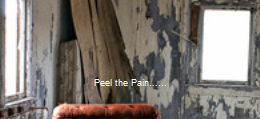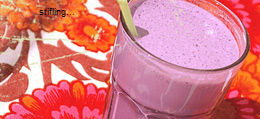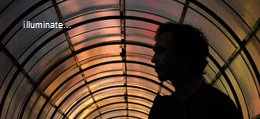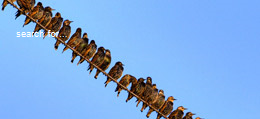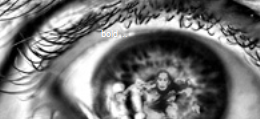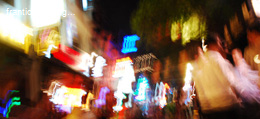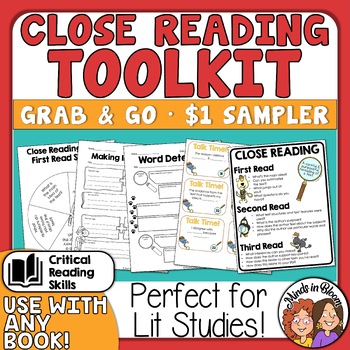Friday 18 December 2015
Saturday 12 December 2015
Falling into Twitter Fiction
I chose to do my storify on Twitter Fiction as explored in Module 5. My goal was to explore the different types of super short stories found on Twitter - not specific genres so much as the different formats these stories could take. (Whether they're single tweet fictions, shared stories on a common hashtag, or a string of tweets following a real life adventure.)
I found the various elements by searching twitter and google for relevant links, accounts, and examples, using search terms such as "twitter genres" and "shared hashtag stories." Inspiration also came from the article Consider Twitter Fiction by Anthony Santulli as found on The Review Review. I also took some inspiration from my own twitter's timeline!
This storify does not portray the full story, as its goal is to highlight different types of storytelling on twitter as opposed to delving deep into any particular one. However, this could absolutely be used as the starting point for a more in-depth paper as each type of twitter storytelling technique could be explored further.
-- Meagan
I found the various elements by searching twitter and google for relevant links, accounts, and examples, using search terms such as "twitter genres" and "shared hashtag stories." Inspiration also came from the article Consider Twitter Fiction by Anthony Santulli as found on The Review Review. I also took some inspiration from my own twitter's timeline!
This storify does not portray the full story, as its goal is to highlight different types of storytelling on twitter as opposed to delving deep into any particular one. However, this could absolutely be used as the starting point for a more in-depth paper as each type of twitter storytelling technique could be explored further.
Friday 11 December 2015
Assignment B - Storify
I absolutely love Storify! I will definitely be using it again and recommending it to others. It is such a fun tool for creating stories.
The topic I choose to explore is from Module 4: Writing for Social Media (Marketing). There is something about Module 4 that had me engaged and wanting more. It is probably because I am personally interested in starting or becoming a part of an online business that I deeply resonate with. I decided to focus on Facebook Marketing because there is only one assigned reading on this topic. In fact, my Storify assignment further explores one of the tips that Scott Ayres mentions in that assigned reading called 7 No-brainer Tips to Write an Awesome Facebook Post.
At first I was overwhelmed by all the information on Social Media Marketing, so I focused on Facebook Marketing. Even that was still too much so I narrowed it down to talking about one idea/tip. Some of the hashtags that I used were specific to the tip/idea and sometimes I would expand it a bit to keywords along the lines of "Facebook Marketing" or "Social Media Writing". Sometimes I would search on Google and then add it to Storify.
I intentionally tried to have different modes because this course has taught me that multimodality can increase engagement. Based on the class readings, I had to make sure the elements were concise, flowed well, and was relevant to my story. It became easier to figure out what to include and what not to include when I became more clear on what my story was about.
My Storify post does not give a "full picture" of my issue because it is just a glimpse of the topic. There is SO MUCH information out there about Social Media and Facebook Marketing. There is much more that needs to be explored especially since it is always changing so fast. This topic is a fascinating hot topic so I could use my Storify post as a starting point. There are many tips and ideas that I can expand on.
I hope you enjoy it.
The topic I choose to explore is from Module 4: Writing for Social Media (Marketing). There is something about Module 4 that had me engaged and wanting more. It is probably because I am personally interested in starting or becoming a part of an online business that I deeply resonate with. I decided to focus on Facebook Marketing because there is only one assigned reading on this topic. In fact, my Storify assignment further explores one of the tips that Scott Ayres mentions in that assigned reading called 7 No-brainer Tips to Write an Awesome Facebook Post.
At first I was overwhelmed by all the information on Social Media Marketing, so I focused on Facebook Marketing. Even that was still too much so I narrowed it down to talking about one idea/tip. Some of the hashtags that I used were specific to the tip/idea and sometimes I would expand it a bit to keywords along the lines of "Facebook Marketing" or "Social Media Writing". Sometimes I would search on Google and then add it to Storify.
I intentionally tried to have different modes because this course has taught me that multimodality can increase engagement. Based on the class readings, I had to make sure the elements were concise, flowed well, and was relevant to my story. It became easier to figure out what to include and what not to include when I became more clear on what my story was about.
My Storify post does not give a "full picture" of my issue because it is just a glimpse of the topic. There is SO MUCH information out there about Social Media and Facebook Marketing. There is much more that needs to be explored especially since it is always changing so fast. This topic is a fascinating hot topic so I could use my Storify post as a starting point. There are many tips and ideas that I can expand on.
I hope you enjoy it.
Storify Assignment B: Electronic Literature the New Future - Diana Rhodes
Electronic Literature, what is it?
Assignment B, By Diana Rhodes
My topic for inspiration came from Module 1: What is literature? I wanted to describe what Electronic Literature is, since when I explain to friends and family about our class - they had no idea of what I am learning.
I had a hard time selecting a topic and how I should create something on storify. I am not much of a writer. I was having difficulty getting all my thoughts and searches on telling my story; from what I've learned these past weeks. Until, I saw the motivational tweet from our instructor: "Very few writers really know what they are doing until they’ve done it." So here is my heart filled attempt to this assignment.
- How did you approach finding the different elements that you included in your Storify post?
I started in the beginning and wanted to answer the question "what is electronic literature?" from our readings in Module 1. I wanted to make my storify educational and short. My goal was to use graphics and videos to share my ideas on what this type of literature is and why it can never be in book form. Also, literature can be use various platforms to communicate with anyone with text, games, social media and graphics. The reader can do more than just read on electronic literature - they can interact.
- What keywords, hashtags, or other methods did you use to narrow or expand your search?
I searched with keywords: Electronic Literature, Interactive Fiction, Born Digital Fiction, Born Digital Text, Graphics, Music, video games, Inanimate Alice and Twitter fiction.
To grabbed all the images from Google, Twitter, Gify, Flickr and web searches. I wanted to include tweets and animation to tell my story. I expanded my search to include books, brochures, stories to help with my storify.
I searched for the video on Shelley Jackson's Patchwork Girl. A Digital Fiction classic that I learned about in one of our readings.
- Why did you decide to include the elements you did?
I tried to select elements that are short and to the point. I didn't want to lose the readers attention with my storify, since from our past readings "Is Google is making us Stupid?" people are not reading, thier power browsing. I tried to put text in very short form to not get too fussy.
- What were the criteria you used in order to decide an element was worth including?
I wanted to answer the What, When, Where, Who, Why and How in my storify:
- The what - is describing Electronic Literature and what it can do to tell the story. I used images with graphics and video.
- The when - a brief segment on Patchwork Girl and that it's started when internet became household. I added the video of Shelley Jackson.
- The where - Some countries are using this in their educational curriculum.
- The who - can be accessed by anyone and that anybody can become an author if they like. They can contribute to Twitter Fiction.
- The why - by explaining the uses for educational and entertainment purposes.
- Lastly, how - by using elements like sound to set the mood, touch by interaction with the game, and visually by changing the text style and graphics.
Example is on my use of music and text in my post. How can you capture music? Could I have found musical notes? Maybe, instead I found a picture with records. Classic like literature, but cool like a DJ and just like an author, the DJ will try to get you to dance or feel something. With the text portion of my post, I found a post with design - I wanted to show text can be graphic and used in the design of the story.
- Do you think your post gives a "full picture" of your issue? Why or why not?
No, not really. I wanted to emphasize the future, the hybrid usage, how it all started and what it can be used for. There was so many search items, so many posts and pictures - I found it became a tad overwhelming.
Electronic Literature is new and can be so vast, that it became frustrating at times to find what would best describe what it is all about. Hard to put it all in a "full picture", since it can be used in many areas and interpreted differently.
- Do you think you could use your Storify post as a starting point for writing a longer academic essay? If so, how? If not, why not?
Labels:
Assignment B,
Born Digital Text,
Educational,
Electronic Literature,
EXSM3989,
Storify,
storytelling,
transliteracy,
twitter fiction
Location:
Edmonton, Canada
Tuesday 8 December 2015
How to write (well) for social media
If you search "writing for social media" in Google, you'll get around 314 million results (yes, million). With such a huge number of potential resources at your hands, how does one narrow these results down to a more manageable number?
The goal of my Storify post was to explore the issue of writing for social media, so I quickly needed to decide how best to wade through the 314 million website hits. I started with the EXSM3989 assigned readings on the topic and went from there. What keywords and topics were used most often in the posts? I then searched Google to bring up the most popular/viewed blog posts and searched the bloggers Twitter accounts for additional hashtags.
The elements included in my post were blog posts, videos, tweets and Facebook posts that I found both informative and engaging, while also being general enough for such a broad topic. The blog posts on writing for both Twitter and Facebook were similar in providing a great foundation for writing tweets and posts and reinforcing that good writing is good writing no matter the platform.
My post in no way gives a full picture of writing for social media, and I don't think that any one blog post or book out there provides a comprehensive how-to of writing for social media. If there was, would there really be 314 million Google results on the topic? What I've tried to do is present a very basic introduction to social media and why it's necessary, and then provided some excellent information on how to construct engaging tweets and posts and examples from companies who use Twitter and Facebook very well.
Writing for social media is an incredibly huge and diverse topic that can be examined from hundreds of angles. The below Storify post could easily be a starting point for a longer academic essay. Each social media platform has different purposes, as well as best practices and even demographics. An essay could easily be written on any number of the above mentioned topics.
The goal of my Storify post was to explore the issue of writing for social media, so I quickly needed to decide how best to wade through the 314 million website hits. I started with the EXSM3989 assigned readings on the topic and went from there. What keywords and topics were used most often in the posts? I then searched Google to bring up the most popular/viewed blog posts and searched the bloggers Twitter accounts for additional hashtags.
The elements included in my post were blog posts, videos, tweets and Facebook posts that I found both informative and engaging, while also being general enough for such a broad topic. The blog posts on writing for both Twitter and Facebook were similar in providing a great foundation for writing tweets and posts and reinforcing that good writing is good writing no matter the platform.
My post in no way gives a full picture of writing for social media, and I don't think that any one blog post or book out there provides a comprehensive how-to of writing for social media. If there was, would there really be 314 million Google results on the topic? What I've tried to do is present a very basic introduction to social media and why it's necessary, and then provided some excellent information on how to construct engaging tweets and posts and examples from companies who use Twitter and Facebook very well.
Writing for social media is an incredibly huge and diverse topic that can be examined from hundreds of angles. The below Storify post could easily be a starting point for a longer academic essay. Each social media platform has different purposes, as well as best practices and even demographics. An essay could easily be written on any number of the above mentioned topics.
Monday 7 December 2015
I explored the "born digital fiction" topic through Storify.
I wanted to include the required "modes" (images, blog posts, video, etc.) in my post, but -- this being my first time out with Storify -- I also tried to experiment a bit with its capabilities.
I searched through each of the Storify tabs that were accessible to me, and found that Google, Getty images, and YouTube yielded most of the results.
I searched primarily for any permeation and combination of "born," "digital," and "fiction." While searching for a combination of the three terms turned up very little, results from searches for two terms could be misleading. Admittedly, I relied on Wikipedia for much of the information pertaining to the origins and development of the born digital fiction medium.
On Twitter, I tried to get a sense of what might be trending re: born digital fiction, and came up with #borndigital, where i found references to "Inanimate Alice" and tweets about a variety of digital creations.
In choosing what I included in the piece, I tried to reflect a variety of modes (tweets, a video, blog posts, an image, a link to a paper, etc.) while reviewing each for relevant content and alignment with the topic. I also tried to select a few modes that were visually interesting (the image and video) to capture the reader's attention.
My post provides a glimpse into born digital fiction, and perhaps a starting point for someone brand new to the concept. While born digital fiction is still relatively young, an abundance of stories have been told over the last few decades, and a single Storify post doesn't adequately paint a "full picture" of the medium. That said, the topic could translate easily (and interestingly) into an academic essay on the origins, current status, and future state of born digital fiction.
I searched through each of the Storify tabs that were accessible to me, and found that Google, Getty images, and YouTube yielded most of the results.
I searched primarily for any permeation and combination of "born," "digital," and "fiction." While searching for a combination of the three terms turned up very little, results from searches for two terms could be misleading. Admittedly, I relied on Wikipedia for much of the information pertaining to the origins and development of the born digital fiction medium.
On Twitter, I tried to get a sense of what might be trending re: born digital fiction, and came up with #borndigital, where i found references to "Inanimate Alice" and tweets about a variety of digital creations.
In choosing what I included in the piece, I tried to reflect a variety of modes (tweets, a video, blog posts, an image, a link to a paper, etc.) while reviewing each for relevant content and alignment with the topic. I also tried to select a few modes that were visually interesting (the image and video) to capture the reader's attention.
My post provides a glimpse into born digital fiction, and perhaps a starting point for someone brand new to the concept. While born digital fiction is still relatively young, an abundance of stories have been told over the last few decades, and a single Storify post doesn't adequately paint a "full picture" of the medium. That said, the topic could translate easily (and interestingly) into an academic essay on the origins, current status, and future state of born digital fiction.
Sunday 6 December 2015
Storify Assignment - Jag
For my Storify assignment, I chose to focus on Twitter fiction, as I've been a follower of @VeryShortStory for a while now and felt that working on a story within the strict constraints of Twitter might help me become a more decisive, concise, and possibly even more creative writer.
Perhaps obviously, I started with the #TwitterFiction hashtag. I had never used or viewed Storify before this assignment but it's quite useful in the way it will help curate and compile a search item amongst many different social media sites. Much like when I would write essays for university, I looked to who I was citing was citing.One of the organizers of a Twitter Fiction festival had her own Storify on the event, which allows readers of my Storify to see other people engaged in this art-form. From there, I found an entire Twitter Fiction festival on YouTube and a visual essay providing some more general background on Twitter Fiction.
I approached my Storify as very much a newbie, and therefore - hoping I'm not the only one - designed my Storify as an introduction to Twitter Fiction for other newbies. The examples, videos and audio I used were all of a wide-scope of Twitter Fiction as a whole and not an attempt to deconstruct a particular facet or account within the broader movement.
My Storify does not give a "full picture" of Twitter Fiction. Although I do feel it serves as a nice introduction to the concept, my Storify does omit some of the criticisms of Twitter Fiction. These criticism include the inanity of stories so short, attacking them as lacking substance or importance, or that they are merely ephemeral and forgettable. It was by design that I took a more neutral and informative approach to the subject, I think it's important the newbie that is my intended audience find their own way to an opinion on Twitter Fiction. Like all art, it is subjective but if it has meaning to you, it can never be discounted.
Since my Storify is one long starting point to Twitter Fiction, I do a feel a longer form, more scholarly piece can grown from what I have done here. However, to give a longer essay value I would have to choose one element covered in my Storify and drill down into it for more detail and exploration. Perhaps the creation, organization and implementation of the Twitter Fiction Festival would be a worthwhile topic or even addressing the aforementioned rejections of Twitter fiction as a viable art-form would make an interesting read.
Perhaps obviously, I started with the #TwitterFiction hashtag. I had never used or viewed Storify before this assignment but it's quite useful in the way it will help curate and compile a search item amongst many different social media sites. Much like when I would write essays for university, I looked to who I was citing was citing.One of the organizers of a Twitter Fiction festival had her own Storify on the event, which allows readers of my Storify to see other people engaged in this art-form. From there, I found an entire Twitter Fiction festival on YouTube and a visual essay providing some more general background on Twitter Fiction.
I approached my Storify as very much a newbie, and therefore - hoping I'm not the only one - designed my Storify as an introduction to Twitter Fiction for other newbies. The examples, videos and audio I used were all of a wide-scope of Twitter Fiction as a whole and not an attempt to deconstruct a particular facet or account within the broader movement.
My Storify does not give a "full picture" of Twitter Fiction. Although I do feel it serves as a nice introduction to the concept, my Storify does omit some of the criticisms of Twitter Fiction. These criticism include the inanity of stories so short, attacking them as lacking substance or importance, or that they are merely ephemeral and forgettable. It was by design that I took a more neutral and informative approach to the subject, I think it's important the newbie that is my intended audience find their own way to an opinion on Twitter Fiction. Like all art, it is subjective but if it has meaning to you, it can never be discounted.
Since my Storify is one long starting point to Twitter Fiction, I do a feel a longer form, more scholarly piece can grown from what I have done here. However, to give a longer essay value I would have to choose one element covered in my Storify and drill down into it for more detail and exploration. Perhaps the creation, organization and implementation of the Twitter Fiction Festival would be a worthwhile topic or even addressing the aforementioned rejections of Twitter fiction as a viable art-form would make an interesting read.
Friday 4 December 2015
Assignment C: Animoto Review Video
Assignment C – Animoto Review Video
Assignment
In this
course we have covered a variety of topics such as Twitterature, born digital
fictions, transmedia narrative and hyptertext. Think of a topic or even a
specific work that is of great interest to you. Perhaps you were drawn into the
growing pains of Alice in Inanimate Alice
or would like to dig deeper into documentary born digital narrative. I would
like you to choose your topic and create a (free) 30 second video using
Animoto. You will need to include text, images and sound. You can draw from
Animoto’s
offerings or find copyright free images using the Creative Commons search on
Flickr.
Your
finished Animoto video must be shared both via Twitter (@JessL and use our
class hashtag) AND the class blog, include a link to it in the comments of the Assignment C: Animoto Review Video blog post (this one).
You must
also include a comment about another student’s Animoto video. This comment can
be separate or included with your video link comment.
Due in class on December 18th
NOTE: our eclass does not accept links so please paste a link to your assignment blog post into a word document and upload that to moodle.
Cross-Platform Stories
Cross-Platform Storytellers = Audience Architect + Story Architect
Posted on 06/17/2014 by Lara Hoefs
 To create successful cross-platform story experiences, it’s important to understand there are two sides to the transmedia coin. Transmedia only begins at creating story across platforms; the other half is building a cohesive cross-platform audience experience. The two go hand in hand when building engaging, moving story experiences.
To create successful cross-platform story experiences, it’s important to understand there are two sides to the transmedia coin. Transmedia only begins at creating story across platforms; the other half is building a cohesive cross-platform audience experience. The two go hand in hand when building engaging, moving story experiences.
Several years ago, understanding that storytelling was evolving in a new media age, the visionary Lance Weiler made a shift in how he identified as a storyteller and he moved away from identifying as a filmmaker to that of a story architect.
 “At one point I considered myself a film-maker but those days are long gone. I now consider myself something akin to a story architect, in the sense that the stories I tell encompass design, delivery and technology.” – Lance Weiler, 2009
“At one point I considered myself a film-maker but those days are long gone. I now consider myself something akin to a story architect, in the sense that the stories I tell encompass design, delivery and technology.” – Lance Weiler, 2009
As we build story experiences in this connected digital age, one side of creating story experiences is building story architecture and the other is building audience architecture. Like Lance Weiler, some storytellers are intuitively wired for 21st century storytelling and are able to simultaneously craft audience architecture within story architecture. Though many storytellers have not been trained to weave in the important element of audience engagement in building out story. That’s why many attempts at creating cross-platform (or transmedia) story experiences are unsuccessful. Creative talents who are amazing with story but have not been trained to build audience engagement into a story experience, would be wise to invite an audience architect to help guide them in building cross-platform audience strategies around their story world.
- Designs and builds a seamless, cohesive audience experience across platforms that intertwines with story
- Gets to know the audience via analysis of data, analytics and social behavioral patterns
- Creates audience strategies that informs the creation of intentional story experiences aimed to involve, inspire and move the audience, thus ultimately building increased story engagement
- Nurtures and grows the audience and story community throughout the life of the story experience
- Becomes the audience advocate that brings the voice of the audience to the table during development of story experiences
21st century storytelling requires new talents to support the creation of successful story experiences that engage, move and build audiences. A key new role that has emerged is the need for an audience architect who can build a cohesive cross-platform audience experience around a story world.
“The audience is telling us what they want, we just need to start listening.” – Lance Weiler, 2009
Labels:
cross-platform,
module 6,
transliteracy,
transmedia
Character Description: Rachel
Pretty Hurts.
Especially when that is all people choose to see.
Every morning, the reflection in the mirror is a constant reminder of her desire to be free... from the fake lashes, fake hair, and fake people. Why can't pretty be defined by courage, laughter, and kindness - like her dear mother, who had a mind brighter than these lights and a heart that was captured by those around her. Her mother would be able to see the inner exhaustion from wearing a mask. She would see how her beloved daughter is hurting from being clothed with lies.
Enough is enough.
It is time to be bare.
She wants people to see that there is depth to her loving sea blue eyes; there is gentleness in her helping hands; there is strength in each tear that falls; and there is wisdom in her walk. It is time to be brave. It is time to heal.
She is more than just a pretty face.

Thursday 3 December 2015
The Power of Visual Storytelling
New visual storytelling site highlights how to engage your audience
via The Next Web
NewsCred, the visual content marketing and syndication service, today launched a new microsite called The Power of Visual Storytelling, in conjunction with its partner Getty Images, the stock photo agency.
The site, and its accompanying free 34-page White Paper of the same name, provide advice and examples for marketers tasked with selecting imagery for various campaigns. Said Erika Velazquez, NewsCred’s brand marketing and communications manager on the NewsCred blog, “The project that we launched today with Getty Images is pretty meta: a piece of visual content that explains the power of visual content, and how to get it right.”
New visual storytelling site highlights how to engage your audience The site outlines four basic principles of visual storytelling:
Authenticity: Real, candid moments and emotions from everyday life.
Sensory: Visuals that highlight details and imperfections as well as overall scenes.
Archetype: Projecting “aspirational” audience personas that concentrate on interpersonal connection rather than demographics.
Relevancy: Delivering localized content in real time.
NewsCred pulled together some essential guidelines its says are critical to the visual creative process and packaged them into a free, downloadable White Paper that offers details, examples, statistics and conclusions.
NewsCred, the visual content marketing and syndication service, today launched a new microsite called The Power of Visual Storytelling, in conjunction with its partner Getty Images, the stock photo agency.
The site, and its accompanying free 34-page White Paper of the same name, provide advice and examples for marketers tasked with selecting imagery for various campaigns. Said Erika Velazquez, NewsCred’s brand marketing and communications manager on the NewsCred blog, “The project that we launched today with Getty Images is pretty meta: a piece of visual content that explains the power of visual content, and how to get it right.”
New visual storytelling site highlights how to engage your audience The site outlines four basic principles of visual storytelling:
Authenticity: Real, candid moments and emotions from everyday life.
Sensory: Visuals that highlight details and imperfections as well as overall scenes.
Archetype: Projecting “aspirational” audience personas that concentrate on interpersonal connection rather than demographics.
Relevancy: Delivering localized content in real time.
NewsCred pulled together some essential guidelines its says are critical to the visual creative process and packaged them into a free, downloadable White Paper that offers details, examples, statistics and conclusions.
Labels:
interactive,
Module 4,
narrative,
social media
Tuesday 1 December 2015
EXSM3989 on Pinterest!
I have been collecting interesting items on a Pinterest board. If you find something you think I should add to the board, please tweet the link to me and tell me! Be sure to use the class hashtag #EXSM3989.
I shall look forward to seeing your pins!
Follow Jess's board #EXSM3989 Digital Storytelling & Narrative on Pinterest.
I shall look forward to seeing your pins!
Follow Jess's board #EXSM3989 Digital Storytelling & Narrative on Pinterest.
#EXSM3989 Students Reading their Character Descriptions
My #EXSM3989 students reading their awesome character descriptions! Check them out: https://t.co/9tof4dzptL pic.twitter.com/xlJkGYkXtT
— Jessica Laccetti (@JessL) December 1, 2015
My #EXSM3989 students reading their awesome character descriptions! Check them out: https://t.co/9tof4dzptL pic.twitter.com/kvaiLd3e7y
— Jessica Laccetti (@JessL) December 1, 2015
Labels:
character,
critical literacy,
reading,
transliteracy,
writing
Margaret - A Character Study
From afar, Margaret was of an indeterminate age. Her sleek
and soft grey hair – woven with peach and bits of white – alluded to maturity.
Youthful amber eyes that were always watching and always full of disdain would leave
you unsettled, feeling that she was merely looking through you, not at you.
Patient, she would sit for hours in a singular pose – but look
closer. Her eyes darted constantly, taking in the world, the room, and you.
Her voice, though rarely used, could cut through the silence
and startle those unfamiliar with her company. Used to getting her way, she spoke
loudly with a gravelly tone in an insistent and intimidating manner.
Prone to using her beauty to achieve her goals, slender and lithe,
she would sashay across the room, with no other purpose than to draw attention her
femininity and assert her control over others.
Cold and distant to most, even those who knew her longest, her
casual and indiscriminate drug use belied the careful demeanor she had built
up. Glimpses of her warmth and youth peeked through during these times and you
questioned your perception of Margaret.
But then she would shake it off, lick her tail and saunter
off. The moment had passed.
Renae
Her eyes were not dark, despite her constant scowl and furrowed brow. Her skin was the South Hiran desert, rough and craggy and dry, aging her far beyond her years. She dressed practically. Her soft brown leathers were flexible and contained a plethora of pockets. She carried everything with her.
You could determine a lot from the way she wore her hair. The single braid down her back was most common for the everyday; a hasty bun indicated anxiety or anger; a more complicated braid about the crown of her head foreshadowed a new job. I had only seen her wear it loose once, the brown waves shining in the flickering light of a midnight fire.
She was strong. Years of climbing had trained her muscles and given her much-needed discipline. She once told me that her only moments of true peace had been found while clinging to a cliff-face far above the ground. I suppose it was like meditating, for her.
She loved the sky. That’s why she climbed, I think: it was a drive to escape both the pull of the Earth and the memories that bound her.
The new beginning - Diana
Amena looked up at the mirror as she finished washing her hands. She was confined to the large air craft's lavatory. The place she now occupied was small, but the square footage she stood on was her own space, quite differently from the spaces she shared with the multitude of family, friends and mostly strangers over the last few months. She finally felt the tingle of peace and solitude.
She looked into her dark eyes and noticed them for the first time, in a very long time. They were still the dark, deep colour of rich Belgium chocolate with an outline of ebony that created definition against the whites of her eyes. The eyes looked tiered, more than tired - exhausted and traumatized. For these were her lenses she witnessed horrible conditions.
She stared into those eyes for a long time, almost long enough to see that they might not even be her own eyes any more - for she wished those eyes continue to hide her tears, her anguish and the horror she saw.
After a few minutes, she heard a quiet knock on the door and the voice of her timid 10 year old brother knocking on the door. Checking to see if she was all right. Not only was this most current journey first for her, but also for the rest of her family. She straightened herself up and got out of the stall. His eyes looked at her and she smiled, hiding all the other emotions that she carried, letting him know that she's all right, that everything from now on - should be all right. There should be no more foot travel, dangerous ocean travel - that all this plane is holding is hope for them and their family in a country called Canada.
He took her hand and led her back to her seat. As she walked, she could still feel the blister on her left foot. The blister was made from hours and hours of walking out of Syria to reach Lebanon. Each time she gingerly stepped down on her left foot, her large toe gave the reminder of how far they walked. An invisible and uncomfortable stone in her left shoe. No matter how hard you try to pry the stone out, it's still there - a reminder of of uncomfortable situations that once were.
She looked into her dark eyes and noticed them for the first time, in a very long time. They were still the dark, deep colour of rich Belgium chocolate with an outline of ebony that created definition against the whites of her eyes. The eyes looked tiered, more than tired - exhausted and traumatized. For these were her lenses she witnessed horrible conditions.
She stared into those eyes for a long time, almost long enough to see that they might not even be her own eyes any more - for she wished those eyes continue to hide her tears, her anguish and the horror she saw.
After a few minutes, she heard a quiet knock on the door and the voice of her timid 10 year old brother knocking on the door. Checking to see if she was all right. Not only was this most current journey first for her, but also for the rest of her family. She straightened herself up and got out of the stall. His eyes looked at her and she smiled, hiding all the other emotions that she carried, letting him know that she's all right, that everything from now on - should be all right. There should be no more foot travel, dangerous ocean travel - that all this plane is holding is hope for them and their family in a country called Canada.
He took her hand and led her back to her seat. As she walked, she could still feel the blister on her left foot. The blister was made from hours and hours of walking out of Syria to reach Lebanon. Each time she gingerly stepped down on her left foot, her large toe gave the reminder of how far they walked. An invisible and uncomfortable stone in her left shoe. No matter how hard you try to pry the stone out, it's still there - a reminder of of uncomfortable situations that once were.
Matt's Character Description
Man in crowd#1 doesn't stand out in any fashion.His average height and build is hidden beneath an undersized cheap suit that he's worn for three years now, one of only two he owns. Beneath the suit another story was written long ago.Two faded white scars run along his lower back, the inch long lines a reminder of the night he was jumped and stabbed while returning home from work one wintery evening through the parkette. Though he doesn't see them everyday, he feels them. His favourite wallet had been stolen. The eight point stars inked on each clavicle were reminders of the past, one which he was hopelessly running from. His eyes have worsened since then and he squints much of the time from reading hours upon hours of reports at his desk.
His apartment is sparsely furnished with seating for two which works well because he never has guests. His single bed mattress lies on the floor in the corner of the one-room unit. He's saving up for a box spring, he's sure this is why his back has steadily grown more pained. A few of the slats on the horizontal blind on the one window are terminally bent revealing too much morning light so he doesn't sleep in like he used to anymore.
The three quarter size fridge holds several vials of insulin, expired milk, an apple, some packages of ketchup he saved from his last outing to McDonald's and a tupperware container containing something that a co-worker gave him a few months ago. In an upper cupboard above the hot plate there's a box. In the box there are photos, a letter, a few pairs of PlastiCuffs, a small glass cutter, a key making set and an 8-round pistol.
His apartment is sparsely furnished with seating for two which works well because he never has guests. His single bed mattress lies on the floor in the corner of the one-room unit. He's saving up for a box spring, he's sure this is why his back has steadily grown more pained. A few of the slats on the horizontal blind on the one window are terminally bent revealing too much morning light so he doesn't sleep in like he used to anymore.
The three quarter size fridge holds several vials of insulin, expired milk, an apple, some packages of ketchup he saved from his last outing to McDonald's and a tupperware container containing something that a co-worker gave him a few months ago. In an upper cupboard above the hot plate there's a box. In the box there are photos, a letter, a few pairs of PlastiCuffs, a small glass cutter, a key making set and an 8-round pistol.
Ari
Peering through the teensy slit he'd made with the door, Ari found he could watch his poor, unsuspecting sister meander around the yard. Crouching there in the dampness of a rotting, late autumn afternoon, he imagined himself a panther -- coiled and alert -- waiting to spring. He blinked. She did look like a rabbit, after all, in her fluffy toque. If she didn't want him leaping out at her, she shouldn't have worn that toque. Ari shifted his weight in the playhouse, watching her. He silently scrunched and unscrunched his feet in his too-tight boots. Probably shouldn't have jumped in that puddle, he reflected, imaging ice sausages where his toes used to be. But it had been Erik's idea -- his best friend, Erik. And Erik was full of great ideas. A person just can't say no to that.
Ari's sister drifted closer.
He thought of how annoying she'd been that morning at breakfast. Whining. Always whining. What had mom said? Something about removing her ears. Ari fingered his ear as he wondered about that. Could a person just take them off? If so, he thought, he'd keep his in his drawer. Next to the tooth fairy notes and the plastic gun he'd managed to hide from his mom. She was sharp, he mused. But not sharp enough.
Ari's sister drifted closer.
He thought of how annoying she'd been that morning at breakfast. Whining. Always whining. What had mom said? Something about removing her ears. Ari fingered his ear as he wondered about that. Could a person just take them off? If so, he thought, he'd keep his in his drawer. Next to the tooth fairy notes and the plastic gun he'd managed to hide from his mom. She was sharp, he mused. But not sharp enough.
Scientist - Character Description - Jag
Hassan needs to shave. Rubbing his weak chin, he feels the hundreds of tiny spikes stabbing his hand and moves his bamboo-chute fingers to rub his eyes. Dropping his hands back onto his expansive desk he stares out to the end of his office. His desk lamp, always pointed down to his work, has given off a rebound of light causing a glint near the door.
Hassan removes his glasses to focus on the glint. These thick, out-of-style frames, for his near-sighted vision. A reminder he needs help to look at the paper in front of him. His equipment to aid in keeping his head down. Always down on the work. The office, the house, the whole goddamn city is just a case - a holding cell - for his desk and his papers.
The glasses tap the desk lightly as he removes them. He can see the glint clearly now. It's his medal. Hard to believe that was ten years ago. "I'm so much older now" he actually says out loud to the office. His voice coming out sounding hoarse and unused.
His hand gently rubs his shoulder and moves down his arm, lightly finger the nicotine patch on what used to be a bicep - now a soft, pale wand for typing and scribbling. Hassan stands up, knees cracking as he stretches. Another rub of his porcupine chin and he begins opening the drawers to his desk. There should be a couple of cigarettes left in here somewhere. He was doing well, but who's going to complain if he lights one up now? Marta is long gone.
He hoists a loose Marlboro from underneath the cover layout concepts for the last version of his textbook and heads to the door of his office. The cigarette, unlit, dangles from his mouth as he approaches the door and notices the medal again.
He always forgets the inscription on the gold disc, but the night he received it remains vivid. Marta looked incredible that night. She was so nervous to meet the president, Hassan thought she might not even want to leave the hotel. But she knew what an honor it was. She knew how important Hassan's work was.
Hassan pats the pocket on his cheap, Wal-Mart button-up but finds no lighter or matches. He removes the cigarette from his mouth and places it gingerly in front of the medal, making sure not to break it. He takes one more look at the medal's inscription before sitting back at this desk to look over his formulas: "For The Greater Good."
Pic Lits
Practise writing a short short story using Pic Lits.
Remember to post your own creation here on the class blog.
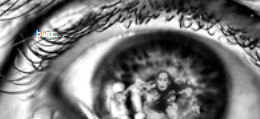
See the full PicLit at PicLits.com
Remember to post your own creation here on the class blog.

See the full PicLit at PicLits.com
Labels:
activity,
narrative,
story,
twitter fiction,
writing
Writing
Read 11 Secrets to Writing
Effective Character
Description:
Write a description for a new
character, think about how the description relates to each of the 11 points
(post this on the class blog)
Include an image
Close Reading Inanimate Alice Episode 5
This morning, after you have read Episode 5 of Inanimate Alice, you will work with a partner to fill in the following google doc. Each group will work on one of the three options (I'll tell you which).
Labels:
analysis,
character,
close reading,
critical literacy,
digital fiction,
inanimate alice,
transliteracy,
writing
Character Development and Twitter Fiction
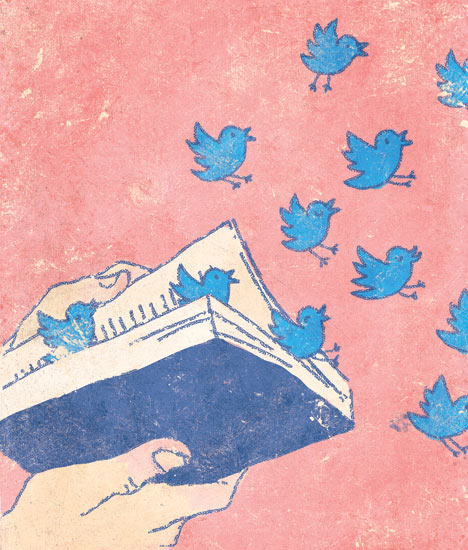 |
| Image via The Guardian. |
To aid in our Twitter writing we are going to form three groups (much like yesterday) and fill in a google doc, there is one doc per group.
Group 1's doc is here.
Group 2's doc is here.
Group 3's doc is here.
Please fill it in completely and be ready to share with the class.
Labels:
activity,
analysis,
introduction,
module 5,
reading,
twitter fiction,
writing
Subscribe to:
Posts (Atom)



_with_desert_varnish,_Fremont_Petroglyphs_Cliff,_Capitol_Reef_National_Park,_southern_Utah_5_(8445593304).jpg)




